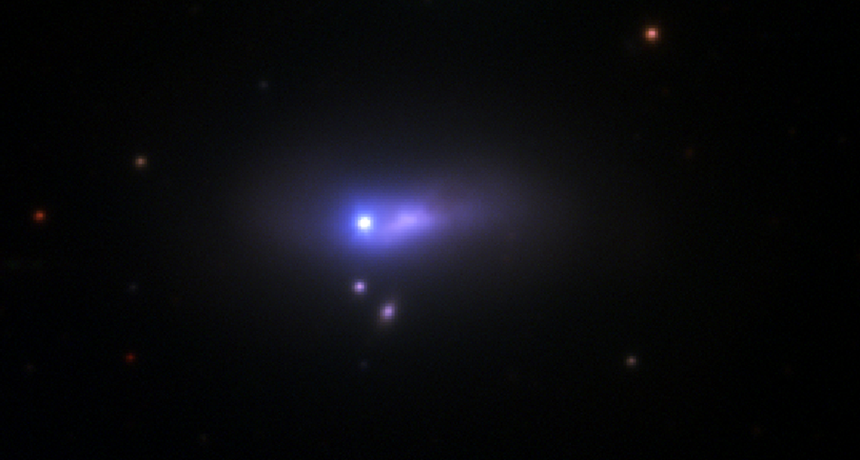Companion star could have triggered supernova

Debris from a cosmic explosion bumped into a neighboring star, a new study reports, suggesting that the surviving star might be responsible for its partner’s demise.
The explosion, known as a type 1a supernova, was discovered in 2012. It went off in a galaxy about 50 million light-years away in the constellation Virgo. Astronomers quickly noticed more blue light coming from the supernova than expected. The excess light probably came from gas that was compressed and heated as the shock wave ran into another star, Howie Marion, an astronomer at the University of Texas at Austin, and colleagues report online March 22 in the Astrophysical Journal. It’s the first strong evidence that some normal type 1a supernovas have orbiting companions.
Astronomers suspect that a type 1a supernova is the detonation of a white dwarf, the dense core left behind after some stars die. What pulls the trigger is up for debate. Two white dwarfs could spiral together and explode. Or one white dwarf could siphon gas off of a companion star until the white dwarf could no longer support its own weight, triggering a destructive regurgitation. Seeing glowing gas from the shock wave slamming into a companion supports the idea that some white dwarfs eat until they explode.
Last year, researchers reported similar observations from another supernova (SN: 6/27/15, p. 9), but that explosion was just one one-thousandth as bright as a typical type 1a. It might not be representative of all type 1a supernovas, which are frequently used as distance markers that help measure the expansion of the universe.